calsfoundation@cals.org
Augusta (Woodruff County)
County Seat
| Latitude and Longitude: | 35°16’56″N 091°21’55″W |
| Elevation: | 215 feet |
| Area: | 2.07 square miles (2020 Census) |
| Population: | 1,998 (2020 Census) |
| Incorporation Date: | July 9, 1860 |
Historical Population as per the U.S. Census:
|
1810 |
1820 |
1830 |
1840 |
1850 |
1860 |
1870 |
1880 |
1890 |
1900 |
|
– |
– |
– |
– |
– |
|
|
702 |
519 |
1,040 |
|
1910 |
1920 |
1930 |
1940 |
1950 |
1960 |
1970 |
1980 |
1990 |
2000 |
|
1,520 |
1,731 |
2,243 |
2,235 |
2,317 |
2,272 |
2,777 |
3,496 |
2,759 |
2,665 |
|
2010 |
2020 |
|
|
|
|
|
|
|
|
|
2,199 |
1,998 |
|
|
|
|
|
|
|
|
Augusta, located on the east bank of the White River, has been the county seat of two counties, first Jackson and then Woodruff, and is the oldest settlement in Woodruff County. The town’s placement at a natural river landing brought prosperity during the era of steamboats. Boats from Memphis, Tennessee, hauling a wide variety of goods landed weekly at Augusta year round, and boats from New Orleans, Louisiana, made regular stops. Augusta is still a part of the river trade as barges haul farm crops from large grain storage facilities on the banks of the White River.
Louisiana Purchase through Early Statehood
Local tradition holds that, long before white men set foot in what is now Arkansas, Chickasaw Indians built a settlement on a high bluff overlooking the White River and the site as a river crossing, which marked an important trail between the tribes. The site has long been called Chickasaw Crossing. In 1820, a man known only as Hamilton landed there and took up residence, but about two years later, he sold his holdings to Rolla Gray, who settled there with his family. Other settlers quickly followed. In 1847, John R. Elliott of Philadelphia, Pennsylvania, and his partner, William Polite, opened the settlement’s first store at the west end of what is now Main Street. Elliott soon retired, and Polite built a new store on an adjacent plot. Thomas Hough (pronounced “Huff”) then moved into the Elliott-Polite building, and the settlement was on its way to becoming a town. In 1848, Hough had the town surveyed and laid out, and he named it in honor of his niece, Augusta Cald of Virginia. Incorporation followed on July 9, 1860. At that time, Augusta was in Jackson County. It became part of Woodruff County when the county was formed in the 1860s.
Most of the families that settled in Augusta came from eastern states and brought culture with them. Visitors remarked on the beauty of the homes in this wilderness and often stayed to join in the building of the town. By 1861, its population had grown to about 600. Hough built present-day Woodruff County’s first church in Augusta in the early 1850s at a cost of $6,000. The Methodists and the Presbyterians shared it. Later, he built the Presbyterian church, which now belongs to—and has been preserved by—the city. The church, visited by President Woodrow Wilson as a young boy (his brother-in-law was pastor from 1878 to 1879), is listed on the National Register of Historic Places. Hough also sold his residence in Augusta to the county to be used as a courthouse; the current courthouse is on the original property. Hough and his wife are buried in a private cemetery behind the Presbyterian church.
Civil War through Reconstruction
The town was almost destroyed during the Civil War. The river landing made Augusta a target for the Union. In 1864, citizens fled from the Federal troops, who tore down houses and used the boards to build shelters in their camps. The finer houses were spared as headquarters for the officers. A skirmish took place at Augusta on August 10, 1864, and expeditions through the area took place in December and January. Almost as much tragedy followed the war, when unrest in the county caused the Republican governor Powell Clayton to declare martial law in Woodruff County and send a company of militia to root out Ku Klux Klansmen in 1868. The commander immediately arrested twelve of the leading citizens of Augusta to ensure the cooperation of the residents. Several people were killed, and the town was looted. Accounts refer to this time as “the darkest day in the history of Augusta.” It lasted several months, until a squad of federal militia arrived to restore order.
Augusta soon recovered and entered its most prosperous time, as riverboat traffic increased in the 1870s. When the railroads proposed crossing the county, Augusta opted out, seeing the river trade as all it needed. When the tracks bypassed the town and the river traffic began to die, Augusta built its own short line railroad in 1887, the Augusta and White River Street Railway, which connected Augusta with the Bald Knob and Memphis Railroad. Called the “Little Dummy Line,” it ceased operations in 1958.
Early Twentieth Century
In 1911, an African-American man named Arthur Dean was lynched for a crime spree that ended in the alleged murder of a white woman named Mrs. Albert Vaughan.
A big event for Augusta and Woodruff County was in 1930, when a $614,734 bridge was completed across the White River, opening U.S. 64, a direct route east and west across the United States and closing the last gap in the highway without a ferry. A huge celebration was held with a parade across the bridge and many dignitaries present. The bridge, which was on the National Register of Historic Places, was replaced with a modern four-lane bridge in 2001 at a cost of $17.6 million.
During the Depression years of 1929 to 1933, crop prices dropped, and the Bank of Augusta closed. There was very little cash in town, and food was scarce. The school would have closed, but an Augusta businessman, Ed Bonner, loaned the school $10,000, and the teachers unanimously agreed to work one month out of every eight months without pay. People lived by raising gardens, hunting and fishing, and trading their surplus for what they could not produce themselves. The Jess Norman Post 166 American Legion Hut was built in 1934; it was later added to the National Register of Historic places in 2001.
Things were almost as hard during World War II, when most of the able-bodied men in the city went to war, leaving their families to deal with rationing of food, shoes, tires, and gasoline. But Augusta weathered both periods with a steady growth in population and economy.
Divergent Prosperity and the Arc of Reform through Modern Era
Augusta is still the seat of government for Woodruff County, and its population is almost equally divided between white and African-American citizens. Desegregation in Augusta began in the mid-1960s and progressed with little trouble. The Augusta Public School System annexed Cotton Plant High School in 2004, increasing its student population by about eighty. During the 2006–07 school year, sixty percent of the students in the high school were black, and thirty-nine percent were white. In elementary, fifty-eight percent were black, and forty percent were white. Augusta has 484 students in elementary and high school as of 2011.
The town is home to several factories and retail stores and is surrounded by rich, productive farmland yielding good crops of rice, soybeans, and cotton. The Rex Hancock/Black Swamp Wildlife Management Area, between Augusta and Gregory (Woodruff County), and the White River landing at Augusta bring many sportsmen to town. Two small downtown parks and a larger park behind the Dallco plant recently have been improved, and residents use them regularly. The Augusta Improvement Club and the Augusta Area Chamber of Commerce work to make the city appealing to residents and visitors alike.
Notable Figures
Laura Conner was a prison reformer and educator. In the 1920s, she served on the state penitentiary board. Hugo and Gayne Preller owned a floating portrait studio and traveled along the Mississippi River and White River taking photographs of Arkansans. Gayne took most of the photos inside the studio, while Hugo took the outdoor photos. Anita Blackmon was a prolific mystery author who wrote more than 1,000 short stories and several novels. John Dale Price was a military aviator who made the first ever nighttime landings on an aircraft carrier. Thomas Stacy, one of the world’s most accomplished masters of the English horn, who performed with the New York Philharmonic for thirty-nine years, grew up in Augusta.
For additional information:
Biographical and Historical Memoirs of Eastern Arkansas. Chicago: Goodspeed Publishing Co., 1890.
Fitzhugh, David. “A Brief History of Augusta, Arkansas.” Rivers and Roads and Points in Between 1 (Fall 1972): 7–13, and (Winter 1973): 3–6.
Herndon, Dallas Tabor. Centennial History of Arkansas. Chicago: S. J. Clarke Publishing Co., 1922.
Thomas, David Yancey, ed. Arkansas and Its People, A History. New York: The American Historical Society, 1930.
Paula Harmon Barnett
Woodruff County Monitor-Leader
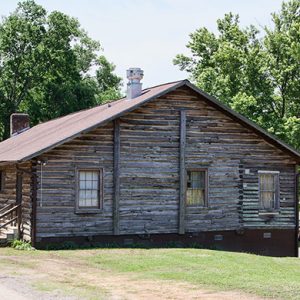 American Legion Post 166
American Legion Post 166  Augusta Train Station
Augusta Train Station 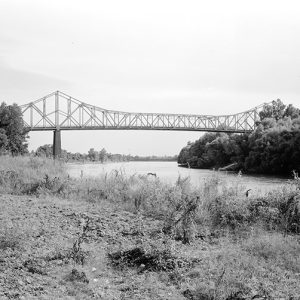 Augusta Bridge
Augusta Bridge 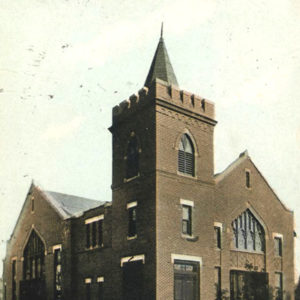 Augusta Church
Augusta Church  Augusta Heritage Center
Augusta Heritage Center 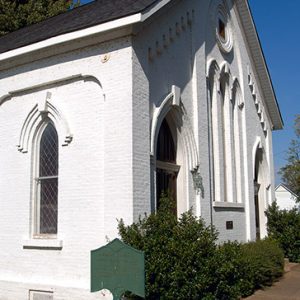 Augusta Presbyterian Church
Augusta Presbyterian Church 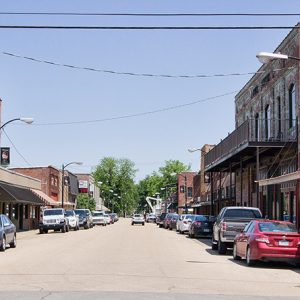 Augusta Street Scene
Augusta Street Scene 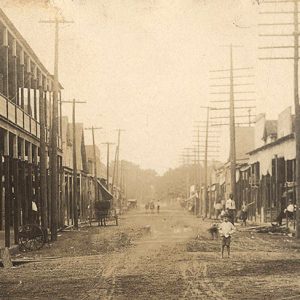 Augusta Street Scene
Augusta Street Scene 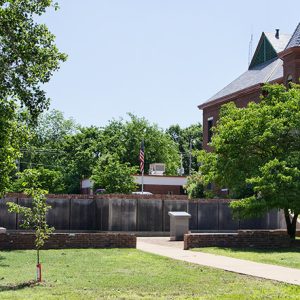 Augusta Veterans' Memorial
Augusta Veterans' Memorial 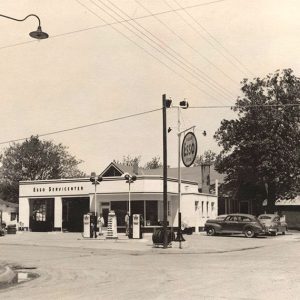 Esso Servicenter
Esso Servicenter 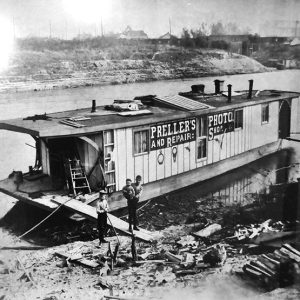 Preller Studio
Preller Studio 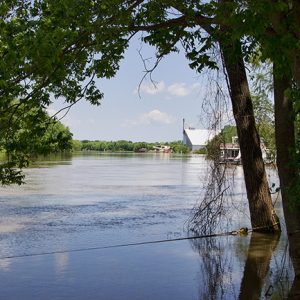 White River
White River  Woodruff County Courthouse
Woodruff County Courthouse  Woodruff County Courthouse
Woodruff County Courthouse 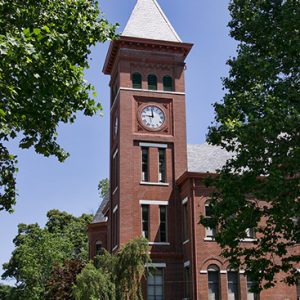 Woodruff County Courthouse
Woodruff County Courthouse 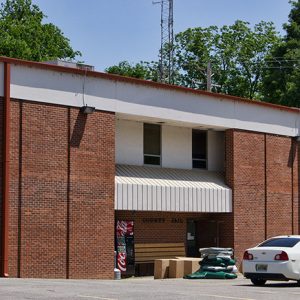 Woodruff County Jail
Woodruff County Jail  Woodruff County Map
Woodruff County Map 




Murray L. Lockhart, my grandfather, was the first man to ship grain on the White River. He was also the sheriff of Augusta at one time–and he even wrestled a bear! He was a cornerstone of the community and employed many people in Woodruff County. He co-founded Lockhart-Thompson Grain Company with Vance M. Thompson, a prominent citizen from McCrory. He was the founder of Lockhart Grain Company, Augusta Barge Company, and Augusta Fertilizer Company, which was the largest fertilizer house west of the Mississippi at the time. He was also the first person to construct a tugboat on the White River; the boat was called the Murray L. His other tugboats were m/v Jane F., m/v Vance M. (Thompson), m/v Murray L II, and m/v Rip-John (named after Vance M. Thompson’s sons). Mr. Vance Thompson died in the 1960s. My grandfather named the two tugs as a tribute to the Thompson family. My grandfather was a great man.